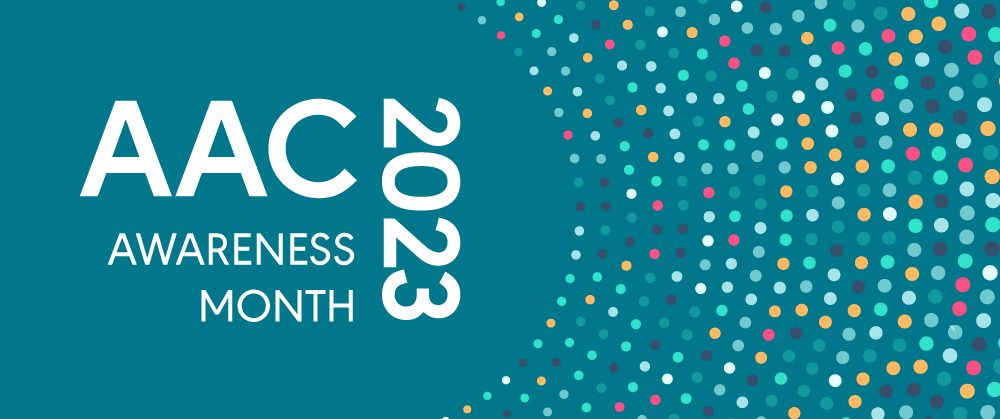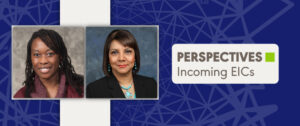Augmentative and alternative communication (AAC) provides people with communication disorders with the opportunity to either replace or add to their speech. AAC could mean anything from writing, drawing, or pointing to using a high-tech computer or tablet with a programmed “voice” to help people communicate with those around them.
ASHA’s speech-language pathologists (SLPs) can be tasked with assessing whether a patient will benefit from AAC and which type would work best—as well as working with them to best use their AAC. In recognition of AAC Awareness Month, we’re presenting six recent articles from ASHA’s journals.
AAC Alongside Other Identities and Diagnoses
An Evidence-Based Approach to Augmentative and Alternative Communication Design for Individuals With Cortical Visual Impairment: For people with cortical visual impairment, most methods of AAC are not responsive to their individual needs. Learn about one unique team-based approach to designing AAC for a person with cortical visual impairment.
Identity-Focused Practice in Augmentative and Alternative Communication Services: A Framework to Support the Intersecting Identities of Individuals With Severe Disabilities: This article provides clinicians with a theoretical framework and a practice example for addressing the intersecting identities of individuals who use AAC. This timely article recently received the Editor’s Award for AJSLP, representing the highest quality in research design, presentation, and impact for 2022.
AAC in the Classroom
Effect of Video Augmentative and Alternative Communication Technology on Communication During Play With Peers for Children With Autism Spectrum Disorder: Many children with autism can benefit from using AAC, and new technologies can help them better connect with their peers. Authors show that video technology on AAC devices can help children with autism better participate in conversations while playing with peers.
The Classroom Profile for Integrated Communication Supports: A Framework to Support Augmentative and Alternative Communication Coaching Services in the School Setting: Although ASHA has advocated for speech-language pathology services to be delivered alongside general education for more than 25 years, most schools still use “pull-out” services, removing children with language needs from classrooms. This article explores an inclusive classroom model using a team-based approach that may increase student performance and staff engagement.
New Innovations in AAC
Visual Scene Displays for Children and Adults: Using Case Studies to Bridge Research and Clinical Practice: This article provides clinicians with the latest research into the effectiveness of visual scene displays in AAC. Read about key principles for visual scene displays, including case studies demonstrating how you can incorporate visual scene display technology into your practice.
A Scoping Review of Research Evaluating Physiological Information for Individuals With Developmental Disabilities: Augmentative and Alternative Communication Research Considerations: Many of us incorporate non-invasive, wearable physiological monitors in our day-to-day lives to track sleep, heart rate, and other functions. The authors explore the potential of incorporating these meters with AAC to help increase communication opportunities and outcomes for people who use AAC.
More on AAC Awareness Month
The AAC Topic Collection from ASHA Journals contains nearly 1,000 articles on AAC from across ASHA’s journals and The ASHA Leader. For those with a particular interest in AAC research, consider joining ASHA’s Special Interest Group 12, Augmentative and Alternative Communication, to connect with colleagues across the country and to read articles from Perspectives for free.
You can learn more about AAC Awareness Month from the International Society for Augmentative and Alternative Communication (ISAAC). This year, ISAAC is highlighting stories featuring unexpected things that happen while using, supporting, and researching AAC.
We hope that these articles help you work with and advocate for people who use AAC, both this month and beyond. Check out our previous coverage of AAC Awareness Month below for even more curated resources on AAC.









